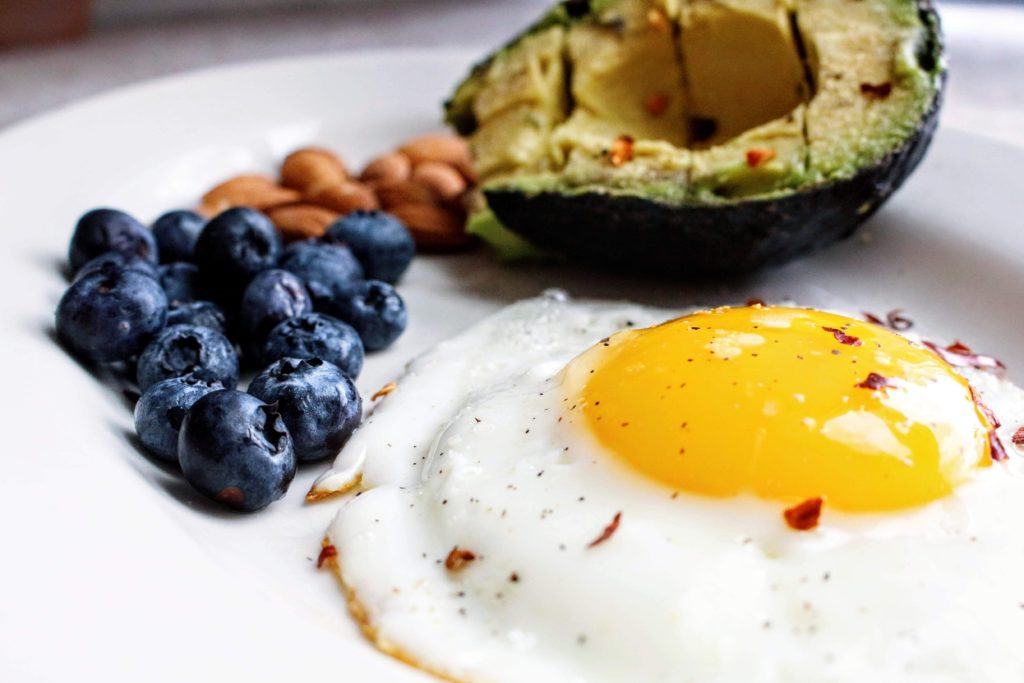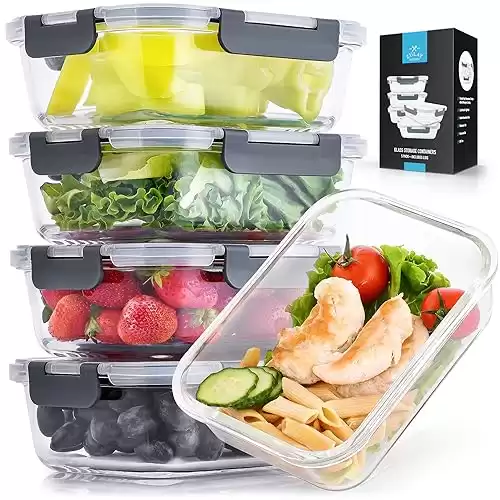Keto Diet for Beginners – Best Practices To Get You Started
Hot chocolate bombs sound great, but how about a fat bomb?
For those new to this method of eating keto (ketogenic diet), a high-fat, low-carb diet, fat bombs are snacks packed with high-fat ingredients that many keto diet devotees love.
The keto diet isn’t here for just 15 minutes of fame. It’s probably been around longer than you think. Eating high-fat and low-carbohydrates was used in the early 1900s to help children control epileptic seizures. Now the diet is used as a popular weight loss regimen.

The keto diet for beginners can seem pretty straightforward at first. However, selecting the right healthy foods while staying satiated and meeting the macronutrient allowance does take a little work.
So pick up your last cup of regular coffee since you will likely go bulletproof on keto (coffee with either butter or ghee and either MCT or coconut oil). Follow this beginner’s guide to learn more about how the keto diet works, what food to eat on the plan and what to expect when you first begin the keto diet.
Table of Contents
What Is the Keto Diet?
Going keto may require a significant change in your eating habits. What’s distinct about the standard keto diet from other low-carb diets is that the fat consumed makes up 70 to 80% of your daily intake, and protein is a much smaller amount.
Usually, the body uses the sugar or glucose from carbohydrates as its primary fuel source. However, if you have consumed minimal carbs, the body then uses stored fat instead for energy and produces ketones. Ketones are chemicals made in the liver and move into the bloodstream, where they are used for fuel by the body’s muscles and other tissue.
This process of using stored fat and ketones as the primary fuel source rather than glucose (sugar) from carbs is known as the metabolic state of ketosis.
The benefits of being in ketosis are that it helps maintain muscle mass while burning fat, reduces your appetite, and improves blood sugar management.
Also, protein intake is moderate on keto because high amounts of protein can convert into glucose. It would then be counter-productive. It would prevent the body from reaching ketosis.
Keto Diet Variations
The standard keto diet is considered the strictest form. There are other variations of the keto diet as well explained below:
Targeted keto can only be transitioned to once you have been on the standard keto diet for at least 60 days, so the body has adapted to consuming high amounts of fat. This keto plan allows you to increase your carb consumption and target the time you work out.
So you would eat around 20 grams of carbs an hour before a workout and another 20 grams immediately after a workout. You should stay in ketosis since your body uses glucose for fuel.
Cyclical keto involves strictly following the standard keto diet for 5 to 6 days of the week and then allowing 1 to 2 days of higher carb consumption. You essentially cycle in and out of ketosis but get to enjoy a more balanced diet on those off days.
It’s best to eat healthy carbs on those off days, such as fruits, starchy vegetables, dairy, and whole grains, to stay with the diet and experience weight loss benefits.
High-Protein keto is a plan that allows for a much larger protein content than the standard plan but is still at least half the fat content that is allowable on keto. Although the carb consumption is still low, protein converts into glucose, so you may not reach ketosis with ease on this plan.
What Do Beginners Eat on the Keto Diet?
When on a standard keto diet, according to Harvard School of Health, for a 2000 calorie diet, the breakdown would be about 165 grams of fat, 40 grams of carbohydrates, and 75 grams of protein.
To achieve success on this diet, it’s key to understand and consume foods that are considered healthy fats. According to the Dietary Guidelines for Americans (2015-2020 Edition), unsaturated fats have health benefits, whereas saturated fats have health risks.
Some examples of unsaturated fats include seafood (like salmon, trout, and tuna), most nuts like walnuts, almonds, and cashew, seeds like flax and pumpkin, avocados, and oils such as olive, canola, peanut, sunflower, and a few others.
Which fats should you avoid entirely? Think processed food, higher fat meats like ribs and sausages, higher-fat dairy, some tropical oils like coconut and palm, and almost all foods considered ‘junk’ (cakes, cookies, and some snack foods).
Saturated fats are not entirely out. Just stick to meals with vegetables, whole grains, low or fat-free dairy products, and lean meats.
You can also do a keto diet vegetarian and here are the reasons to go vegetarian.
How Do You Keep Track of What You Eat?
Tracking the macronutrients (carbs, protein, and fat) and daily calories yourself can get complicated and tiring. There are two tools that many keto dieters use to help them keep track of the macros they consume.
- A scale to weigh food portions
- Macros tracking app
- The classic kitchen scale is the perfect introduction to measuring your food for better cooking and portioning at home.
Some keto dieters track net carbs, which is the total carbs minus sugar, alcohol, and fiber. Although the food source is a carb, the fiber portion is removed from the carb count because it doesn’t get digested.
If you find it annoying to track everything you eat this way, one option is to record just one macro, typically the carb intake. Tracking just the carbs is a component of the Lazy keto plan. The theory is if your carb count is still low enough, you will likely be in ketosis without needing to measure the other macros.
Also, with the carb count being so restricted, it will become easier to know what carbs to consume, so eventually, tracking the macros won’t even be necessary.
What Is the Easiest Way for Beginners to Start the Keto Diet?
Clean Out Your Fridge and Pantry
It’s best to remove all processed food and carbs from sight that may sabotage your diet. Better to remove as much temptation as possible, especially when you may have more cravings earlier in the diet. That is unless you are looking to follow the Dirty keto plan. Dirty keto allows you to eat whatever foods you want; whether they are processed or completely unhealthy doesn’t matter, as long as you keep to your macronutrient limits.
Create a Weekly Meal Plan
There are a lot of diet tips out there, but the best by far is to prepare. By preparing, I mean creating a meal plan for every day and every meal and snack you need while on the keto diet.
Meal prep is the best way to stay on the keto diet long-term. Look at different keto recipes and plan your keto meals for the week.
Make your grocery list accordingly with quality fats and permitted vegetables and protein. This way, you know exactly what you can eat when hunger strikes, and you won’t have the temptation to go dirty!
Meal Prep
In order to avoid any stress that may be caused by trying to figure out what to make for your next meal, it is a great idea to meal prep.
Meal prepping saves time by allowing you to make everything at one time. This means you only wash the dishes once, get out all of the oils, ingredients and only cook once.
I recommend getting some meal prep containers that you can easily re-heat your food in. Although microwaves are not typically recommended to use, because they use radiation to heat your food, most of us resort to using them for a quick meal.
So if you plan to microwave your meal-prepped food for the week, I HIGHLY recommend using glass to store and re-heat your food in. This helps you to avoid BPAs and other chemicals found in plastics.
BPAs, BPS, and phalathates are endocrine disruptors, meaning that our bodies will be low in hormones we need, unable to lose the inflammatory body fat we are trying to lose and it can contribute to bone density issues, fatigue, insomnia, irritability, and mood disorders. Learn more about avoiding chemicals in plastic here.
“BPA induces carcinogenesis, reproductive toxicity, abnormal inflammatory or immune response, and developmental disorders of brain or nervous system through various cell signaling pathways.”
–Masaharu Murata & Jeong-Hun Kang
- Premium Borosilicate Glass: Featuring a 100% BPA-free thick glass that can withstand heat up to 600 degrees Fahrenheit making this glass container best for microwave, oven, and freezer. The package comes with 5 rectangular container pieces with 36oz capacity that is perfect for packing work lunch portions, storing leftovers, and neatly prepping meal servings.
Try Intermittent Fasting
While intermittent fasting focuses on timing restrictions of when you can and cannot eat, it has one thing in common with keto. Fasting for even 12 hours helps put the body in ketosis.
You can even combine keto and intermittent fasting initially to help reach ketosis faster. But carrying on with two restrictive diets for longer than a few days is not recommended.
Challenges When Starting Keto
The Keto Flu
One of the reported side effects (but not medically supported) of being on the keto diet is the keto flu. The keto flu consists of symptoms that can appear within the first week of starting the keto diet. Some of these symptoms include headaches, foggy brain, fatigue, nausea, and constipation, to name a few.
Although it contains the word ‘flu,’ there are no classic flu-like symptoms. It’s best to drink plenty of water and either ride it out or try to ease into the plan more slowly.
Health Conditions
The keto diet may not be safe for everyone. For instance, people with type 2 diabetes who are generally overweight can see good results. Also, a study in the journal Diabetic Medicine found that type 1 diabetic patients had excellent blood sugar levels.
However, anyone with type 1 diabetes should have their doctor closely monitor them to ensure blood sugar levels remain controlled. According to University of Chicago medicine, keto could also cause low blood pressure, kidney stones, and constipation. There can also be an increased risk of heart disease if you consume too many saturated fats.
No Cheat Days
It’s not easy being social when on the keto diet. Typically gatherings with friends and family have a lot of food served which may not be healthy or meet keto requirements.
One bad day of eating can kick you out of ketosis, and it can take days of strict eating to get back on track. Furthermore, one study indicated that even just one 75-gram dose of glucose, equal to a bottle of soda or a plate of fries, can lead to damaged blood vessels while on keto.
Like any diet, success with the keto plan requires a strong commitment, initial prep work with meal planning, and determination.
The keto diet has proven to be a successful method of treating obesity and type 2 diabetes. Research is continuing in this area to determine if keto can help combat other chronic conditions such as type 1 diabetes, cancer, and neurodegenerative disease.
So sip your bulletproof coffee, stock up on steaks, and enjoy your smaller waistline.
This article originally appeared on Wealth of Geeks.
Originally posted 2022-02-07 00:24:55.
Megan Santiago
Latest posts by Megan Santiago (see all)
- How to Find a Trauma Therapist in Tampa - September 30, 2024
- How to Get Rid of Cellulite: Natural Ways to Eliminate it - March 10, 2024
- 47+ Know Your Worth Quotes and Affirmations to Boost Your Self-esteem - March 10, 2024


